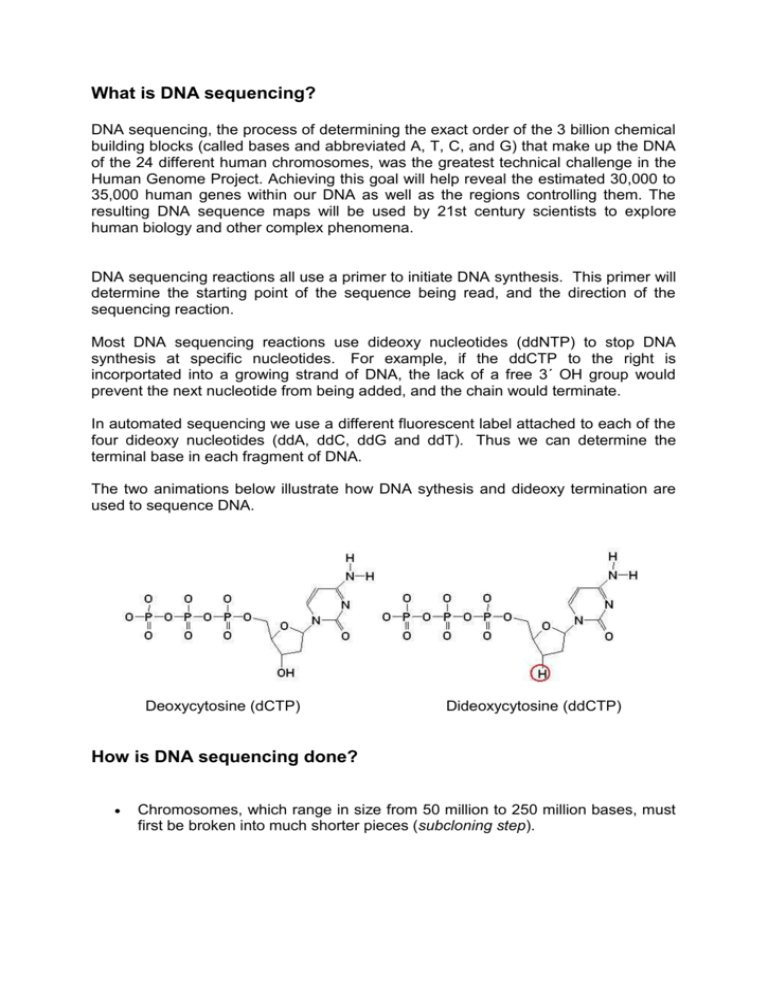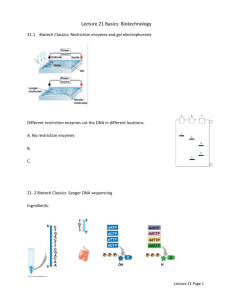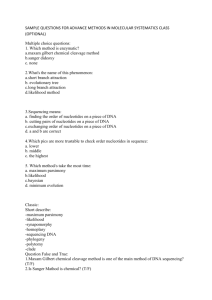What is DNA sequencing
advertisement

What is DNA sequencing? DNA sequencing, the process of determining the exact order of the 3 billion chemical building blocks (called bases and abbreviated A, T, C, and G) that make up the DNA of the 24 different human chromosomes, was the greatest technical challenge in the Human Genome Project. Achieving this goal will help reveal the estimated 30,000 to 35,000 human genes within our DNA as well as the regions controlling them. The resulting DNA sequence maps will be used by 21st century scientists to explore human biology and other complex phenomena. DNA sequencing reactions all use a primer to initiate DNA synthesis. This primer will determine the starting point of the sequence being read, and the direction of the sequencing reaction. Most DNA sequencing reactions use dideoxy nucleotides (ddNTP) to stop DNA synthesis at specific nucleotides. For example, if the ddCTP to the right is incorportated into a growing strand of DNA, the lack of a free 3´ OH group would prevent the next nucleotide from being added, and the chain would terminate. In automated sequencing we use a different fluorescent label attached to each of the four dideoxy nucleotides (ddA, ddC, ddG and ddT). Thus we can determine the terminal base in each fragment of DNA. The two animations below illustrate how DNA sythesis and dideoxy termination are used to sequence DNA. Deoxycytosine (dCTP) Dideoxycytosine (ddCTP) How is DNA sequencing done? Chromosomes, which range in size from 50 million to 250 million bases, must first be broken into much shorter pieces (subcloning step). Each short piece is used as a template to generate a set of fragments that differ in length from each other by a single base that will be identified in a later step (template preparation and sequencing reaction steps). The fragments in a set are separated by gel electrophoresis (separation step). New fluorescent dyes allow separation of all four fragments in a single lane on the gel. The final base at the end of each fragment is identified (base-calling step). This process recreates the original sequence of As, Ts, Cs, and Gs for each short piece generated in the first step. Automated Sequencing G A T C Manual Sequencing Automated sequencing uses a different fluorescent dye attached to each ddNTP. Manual sequencing uses radiolabeled dATP (35-S or 33-P) to label the DNA. The sample is then split into four tubes each with an individual ddNTP present. The samples are then subjected to acrylamide gel electrophoresis followed by autoradiography.






